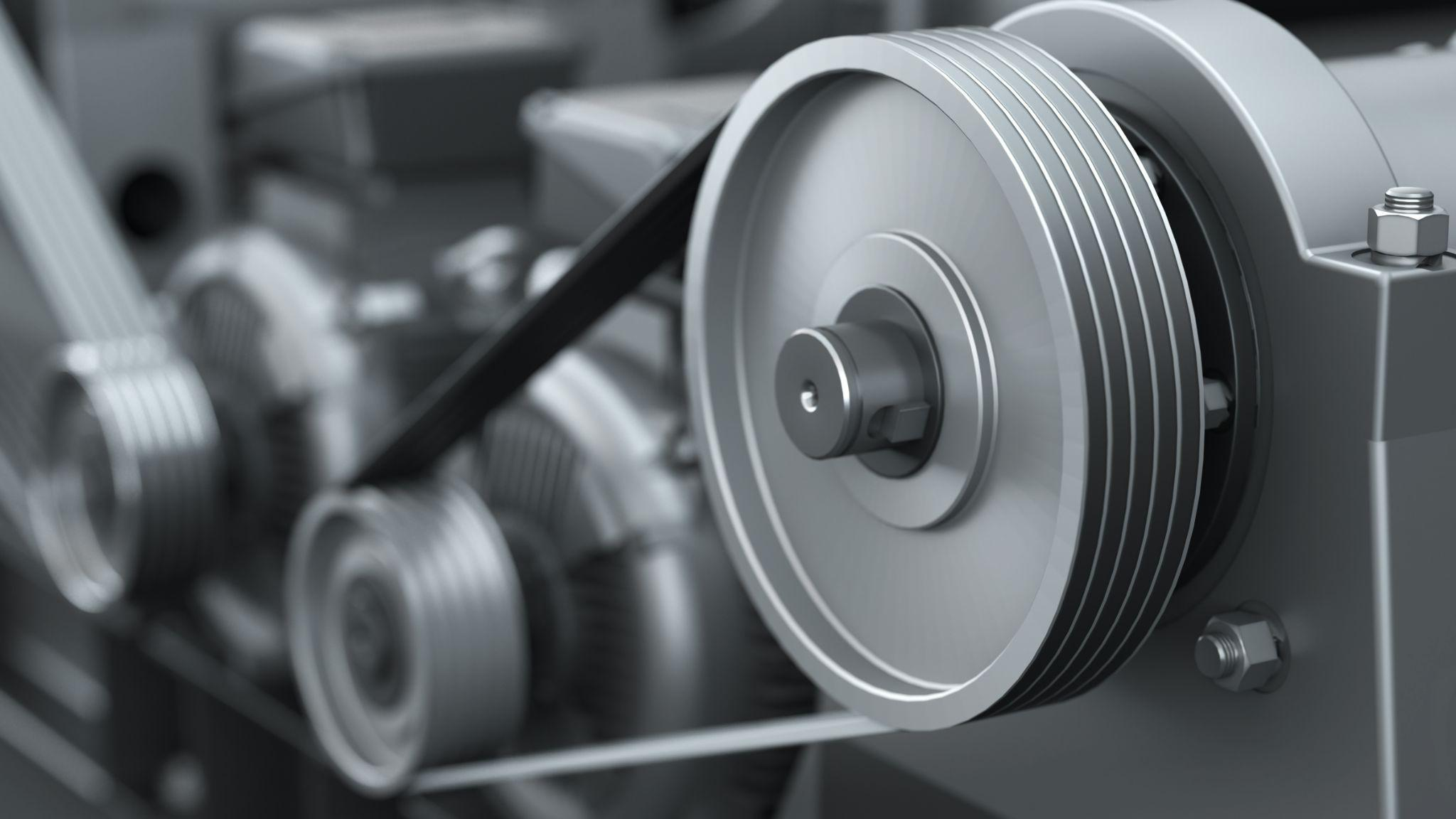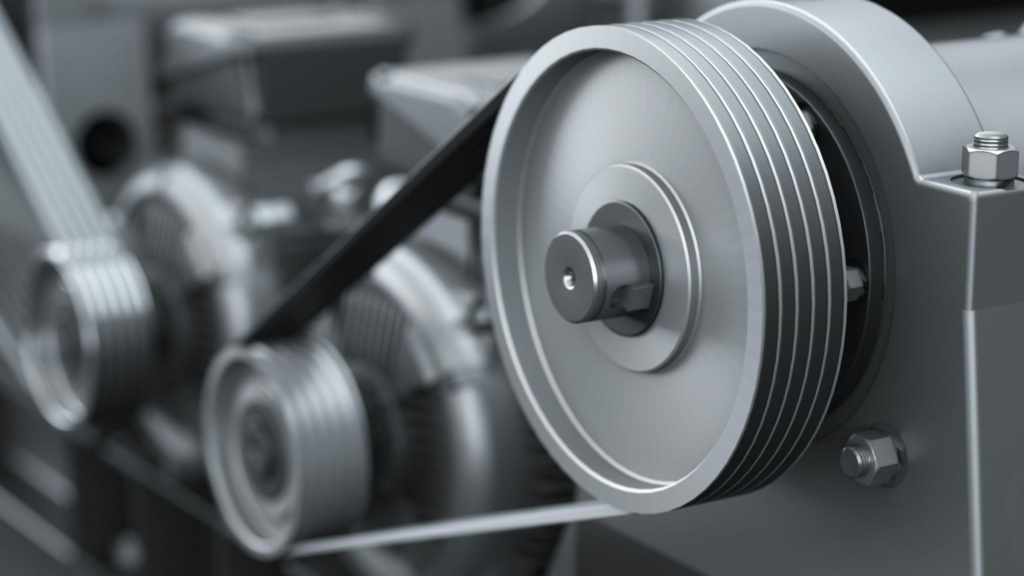V-belts and v-belt pulleys are essential components in ventilation systems, responsible for transferring power from the motor to the fan and ensuring efficient air circulation. When these parts wear out, the entire system’s efficiency and reliability can be significantly compromised. Understanding the reasons behind the wear and tear of v-belts and pulleys can help in implementing effective maintenance strategies to prolong their lifespan and ensure the smooth operation of ventilation systems.
In this article, we’ll cover some of the main reasons why v-belts and pulleys in ventilation systems wear out.
Reason 1: Misalignment
Misalignment occurs when pulleys are not properly aligned, causing belts to run off-track. Misalignment increases friction and causes uneven wear on belts and pulleys. This can lead to belt slippage, excessive heat generation, and ultimately, premature failure of both components.
Causes of Misalignment
Improper Installation: When pulleys are not aligned correctly during installation, it sets the stage for premature wear.
Mechanical Shifts: Over time, components can shift due to operational vibrations and mechanical wear.
Environmental Factors: Temperature changes and external impacts can also cause misalignment.
Signs of Misalignment
Uneven belt wear
Excessive vibration
Noisy operation
Frequent v-belt replacements
Reason 2: Improper V-Belt Tension
Proper belt tension is critical for the efficient transfer of power from the motor to the fan. The belt should neither be too tight nor too loose.
Over-tightening can cause the belt to stretch, lose elasticity, and put excessive strain on pulleys. On the other hand, under-tightening can lead to belt slippage, reducing power transfer efficiency and causing uneven wear. Both conditions contribute to accelerated wear and tear, diminishing system performance and longevity. Regular checks with tension gauges can help to maintain optimal belt tension and prevent these issues. A good rule of thumb is to aim for approximately ½ Inch of deflection for a v-belt in the middle of the span length. The “span length” is the distance from where the belt is leaving one pulley, to where it’s completely seated on the second.
You can also use this belt tension calculator, or refer to the manufacturer’s specs for each v-belt, to uncover a more precise PSI for the tension of your v-belt.
Reason 3: Accumulation of Dirt and Debris
Dirt and debris can come from various sources, including the surrounding environment, operational activities, and even from within the system itself.
Effects of Dirt and Debris on V-Belts and Pulleys
Abrasion: Dirt and debris can cause abrasive wear on belts and pulleys.
Reduced Efficiency: Accumulation can lead to reduced efficiency and increased friction.
Maintenance Tips to Keep Components Clean
Regularly clean the ventilation system and its components.
Use protective covers to minimize exposure to dirt and debris.
Schedule frequent inspections to identify and remove any buildup.
Reason 4: Environmental Factors
Environmental factors can significantly contribute to the wear and tear of belts and pulleys in ventilation systems. Temperature extremes play a major role here; high temperatures can cause belts to harden and crack, while low temperatures can make them brittle and prone to breakage. Additionally, exposure to harsh chemicals and oils can degrade belt materials. To mitigate the impact of these environmental factors, you can purchase v-belts and pulleys made of the proper materials (such as Kevlar v-belts), apply protective coatings, and install shields to protect the system from environmental contaminants. Ultimately, investing in high-quality v-belts and pulleys reduces the frequency of replacements, lowers maintenance costs, and improves system reliability.
Reason 5: Lack of Regular Maintenance
Regular maintenance is crucial for preventing wear and tear to belts and pulleys in ventilation systems. Routine inspections help identify potential issues before they escalate into significant problems, and costly repairs. Regular maintenance can help to prevent issues such as system misuse and overloading. This involves operating the system beyond its capacity or in extreme temperatures without adjustments. To avoid causing unnecessary wear due to these circumstances, you can follow manufacturer guidelines, operate the system within its recommended capacities, and regularly inspect and adjust system settings.
In general, here are some other common maintenance tasks to keep your ventilation system operating at its peak performance:
Inspecting belt tension
Checking belts for cracks or other signs or wear
Cleaning belts and pulleys
Regularly inspect and adjust system settings as needed to prevent overloading the ventilation system
By adhering to these best practices, you can extend the lifespan of your belts and pulleys and improve the performance of your ventilation system. Neglecting these tasks can lead to shorter lifespans for belts and pulleys, unexpected breakdowns, and expensive replacements.
Conclusion
Maintaining v-belts and pulleys in ventilation systems is essential for ensuring the efficient operation and long lifespan of HVAC equipment. Misalignment, improper tension, dirt accumulation, environmental factors, and a lack of maintenance, can all contribute to wear and tear. Regular maintenance and the use of high-quality parts can mitigate these issues. Contact TRI-AIR SYSTEMS for professional maintenance services to keep your ventilation system running smoothly.






